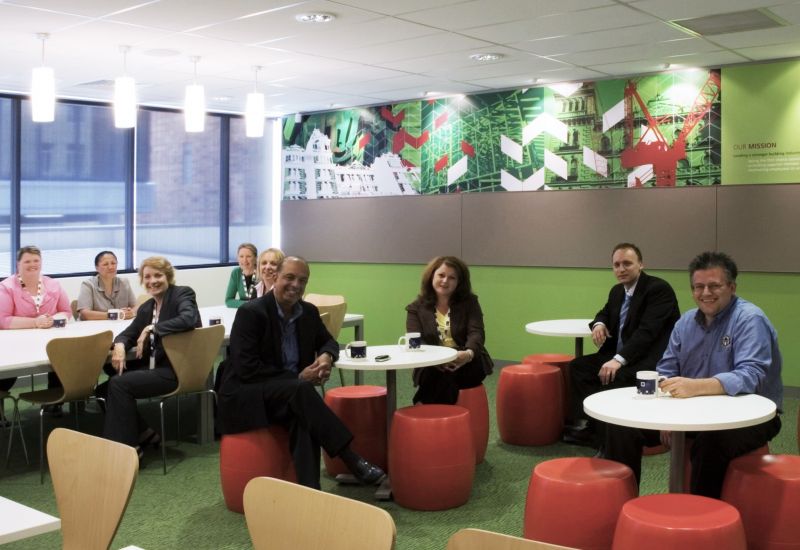Bring People Along the Activity-Based Workplace Journey

In the social and mobile workforce of today, workplaces which are more open, interactive, and flexible are barely considered "cutting edge". The rapid advance of technology, and the evolution of management style has been a strong influence on workplace design shifting towards Activity-Based Working (ABW). But what does this mean for people who actually do the work?
It is well known that the business plan, culture, technology and future direction of an organisation drives workplace change. Practical questions are easily addressed such as: Should the organisation have a cloud based IT platform? What audiovisual and digital collaboration tools are needed? What percentage of employees will be telecommuting in the next five years? But the obvious "˜soft issues' are the ones that most often derail the process; the sensitivities we have as humans that aren't likely to change with the speed of technology or even the next century.
Here are a few simple tips to bring people along the journey:
- People are different and therefore respond differently to environments. Provide a variety of workspaces and settings both within and outside the office and allow employees to decide which type of environment and location will best support their task. This will keep people productive and happy. Allowing people to have control or an ability to slightly influence their environment will make them even happier.
- Open offices encourage "we time" but we all need a little "me time." Private, heads down spaces are necessary in any office to provide employees with a refuge to complete the intense and focused assignment, make the private phone call, or recharge the reclusive introvert.
- Provide comfortable work areas. This should extend beyond the selection of ergonomic chairs and adjustable furniture. Carefully planned building systems which include the consideration of acoustics treatments, sufficient air circulation and fresh air intake, and the flexibility of lighting levels will increase comfort of employees therefore increase productivity. It is critical to assess the capacity and capabilities of services before retrofitting ABW into an existing building.
- Provide flexible Information and Communication Technology Systems (ICT) that actually makes work easier for people. Integrating business technology, databases, and centralising information will enhance the efficiency of an ABW model. Making sure these systems have a user friendly interface and that proper training is included for employees will help these systems be used to their full potential.
- People have personal things and need a place to put them. Better utilisation of space promotes efficiency and productivity and decreases office area. However, it is essential to provide employees with a personal area where they can keep their belongings, and often work material safe, regardless of if they only occasionally drop in.
- Offices don't need a slide or ping pong tables to be a positive and productive work environment. Often people don't respond well to novelty or "forced fun." Giving employees the freedom of selecting their work environment and including a break area where people go to refuel together, conversations and hopefully a little laughter will start naturally.
- People like beautiful environments. An attractive, aesthetically pleasing work environment that reflects the values and principles of the organisation will help people feel good at work and take pride in their workplace.



